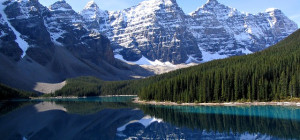 Toddlers are at a very special age, one where they’re very mobile and prone to wandering but not very good at looking after themselves. The cold, icy and wet winter weather can turn even the simplest walk into painful slip or freezing trek. Thanks to some expert help from Donaghys, we’ve brought you this list of the best winter shoes for a toddler, in no particular order.
Toddlers are at a very special age, one where they’re very mobile and prone to wandering but not very good at looking after themselves. The cold, icy and wet winter weather can turn even the simplest walk into painful slip or freezing trek. Thanks to some expert help from Donaghys, we’ve brought you this list of the best winter shoes for a toddler, in no particular order.
Booties
Booties are seen as the quintessential winter shoe, but there are definitely times where they aren’t the most convenient choice. Either way, they’re a reliable way to keep your little one’s feet dry – having wet feet in cold weather isn’t just uncomfortable, but could actually be a health risk due to frostbite and blisters.
Younger toddlers should wear booties that only go up to the top of their feet: the lack of support will help them develop stronger leg bones and shins through exercise. Once they’ve fully developed, switch to full-length booties to give them a bit more leg protection and warmth in colder weather.
Wellies
The classic British wellington boot is very good at keeping your baby’s feet safe from the winter chill. They’re almost guaranteed to protect your toddler no matter what they’re walking through, but you might need to give them some thick socks to keep their legs warm – the rubber can press on their skin, which is really painful in chilly conditions.
It’s worth keeping in mind that wellies can be heavier than normal shoes, which might tire them out a lot faster on longer walks, and you might need to carry a different set of shoes for anything more than walking and running.
Trainers
Toddler-sized trainers always look adorable, and more active babies will love having the extra spring in their step. They’re usually designed for running about and playing, which can make them ideal for children with an active streak in most weather. Just make sure you get them properly fitted to keep your toddler’s feet safe: loose trainers won’t hurt them, but it’s best to give them something tight and cosy.
Trainers can get waterlogged easily, especially since they’re almost always made out of soft fabrics, so have something more watertight on hand if you can. Snow won’t cause this, but slush and cracked ice puddles will crop up in the places you least expect it.
Canvas shoes
Canvas shoes aren’t very water-resistant but are usually known for being secure – if you’re worried about your toddler kicking off their shoes accidentally or losing them after a stumble, these might be the best choice for day-to-day activities. Your little one might not find them comfortable if the sole is hard, so make sure you try them on before you commit to buying a pair.
The main problem would be the cold weather – putting your child in thick socks will make their shoes fit tighter, so wearing them outdoors can be uncomfortable for them during long walks. Try to limit canvas shoes to short strolls and indoor play when you can.
Shoes with Velcro
Velcro straps are more accessible than laces, and they’re much easier to swap around if your toddler wants to play in the water or wade through slushy snow. They might even learn how to tighten it themselves, so there’s no need to worry about it coming undone in the middle of a long walk.
However, learning how to tie laces is an important skill that your child will need to learn at some point, so it might be worth switching them to proper laces as soon as possible. Even so, Velcro shoes can be faster, easier and less awkward if all you need is some shoes to keep a toddler’s feet warm and dry during the winter weather.
Shoes with Laces
Laces can take a while to tie and untie, but they’ll almost guarantee that your toddler’s shoes won’t slip off or accidentally loosen themselves. The tighter you can make a shoe, the less snow your child will get inside, making them far more comfortable in the long run – laces are ideal for keeping their toes warm and covered at all times.
Slip-on shoes
Wearing slip-on shoes outdoors can be a mixed bag depending on the weather – they’ll be loose, so your little one’s feet might get chilly just by being outside, but they’re also really easy to take off and clean or dry if snow actually does get inside them.
In general, these shoes should probably be limited to the house and the garden – they’re the most comfortable and accessible style of shoe for a younger toddler, and they’ll likely be able to put them on all by themselves within a month or two of wearing them.
Sources:
https://www.parents.com/baby/development/walking/picking-the-perfect-first-shoes/
https://www.pedorthic.ca/wet-feet-are-bad-for-your-health-but-they-dont-cause-colds/
https://www.whattoexpect.com/toddler/toddler-gear/best-shoes-for-toddlers.aspx
http://blog.dinopt.com/shoe-recommendations-for-children/
https://www.lucieslist.com/best-walking-shoes-infants-toddlers/







